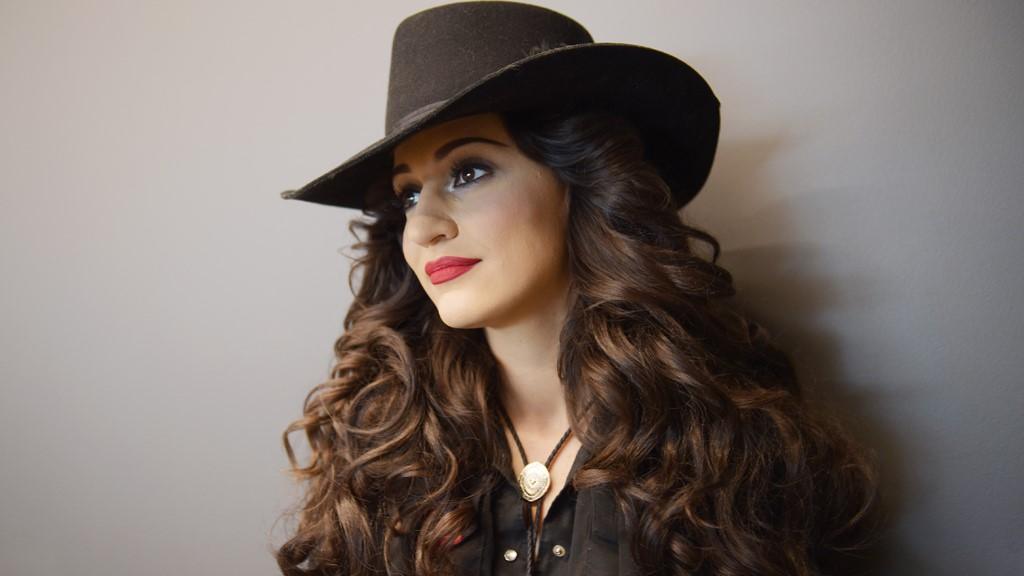Body dysmorphia: Artists tackle distorted self perceptions
- Published
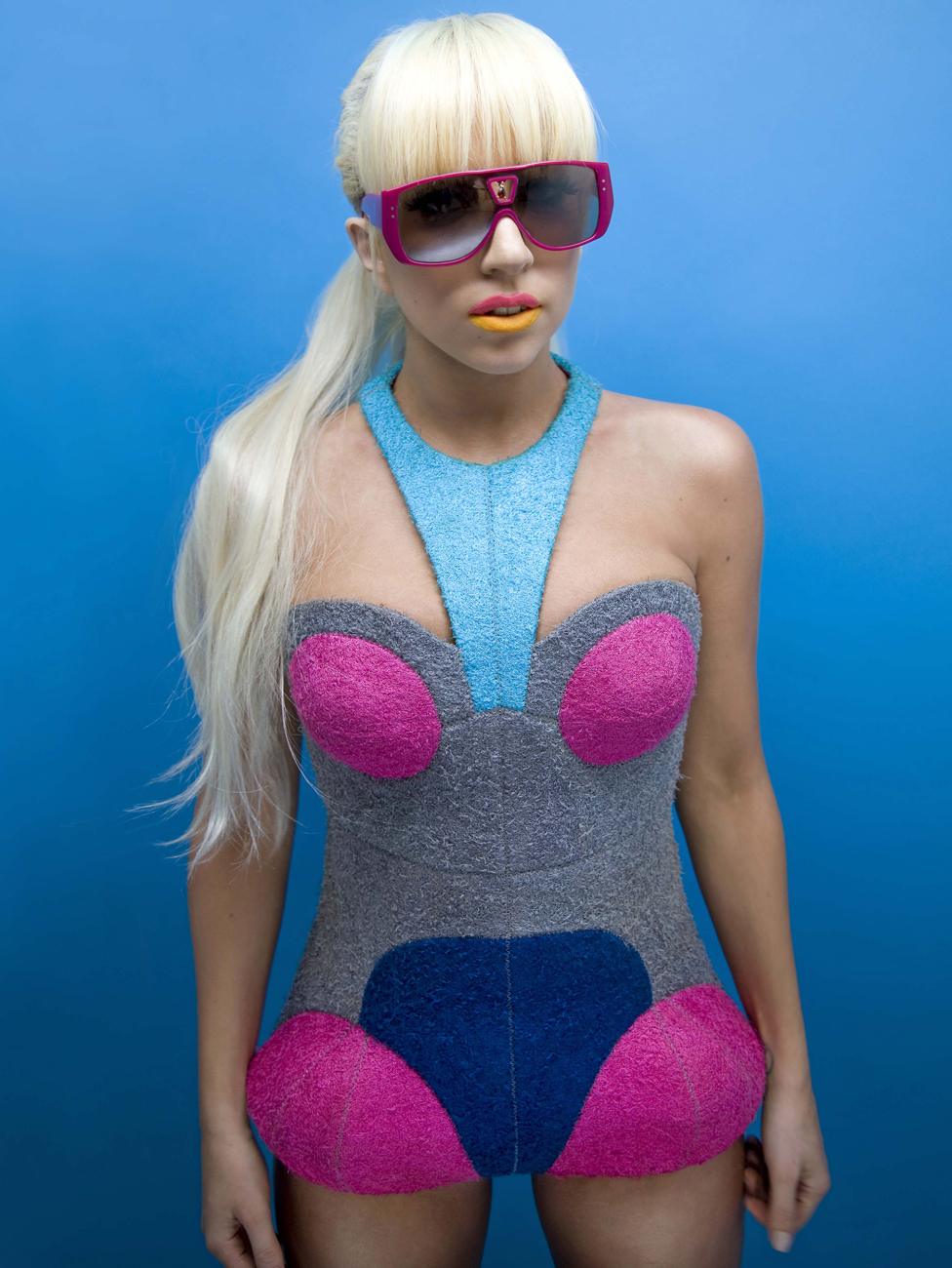

In January 2009, photographer Derrick Santini was offered a magazine shoot with an unknown US singer.
"I'd never heard of Lady Gaga when the job came up," he tells BBC News. "Of course, two months later, everyone knew her."
At the time she posed for the portraits, Gaga was on the brink of releasing her debut single Just Dance - which became the first of several monster hits.
Santini, who has also photographed Adele, Mary J Blige and Idris Elba, was commissioned to shoot Gaga for The Sun's recently launched Fabulous magazine.
"Everything was slightly exaggerated with her," Santini recalls. "We pumped up the colours, we went for this very poppy background, these obviously quite full-on outfits."
"She knew what she wanted, she was really a pro, it was clear, she was so on her image and what she was doing all the time, there was no messing about."
The images documented how Gaga uses fashion, art and performance to express radically different identities.
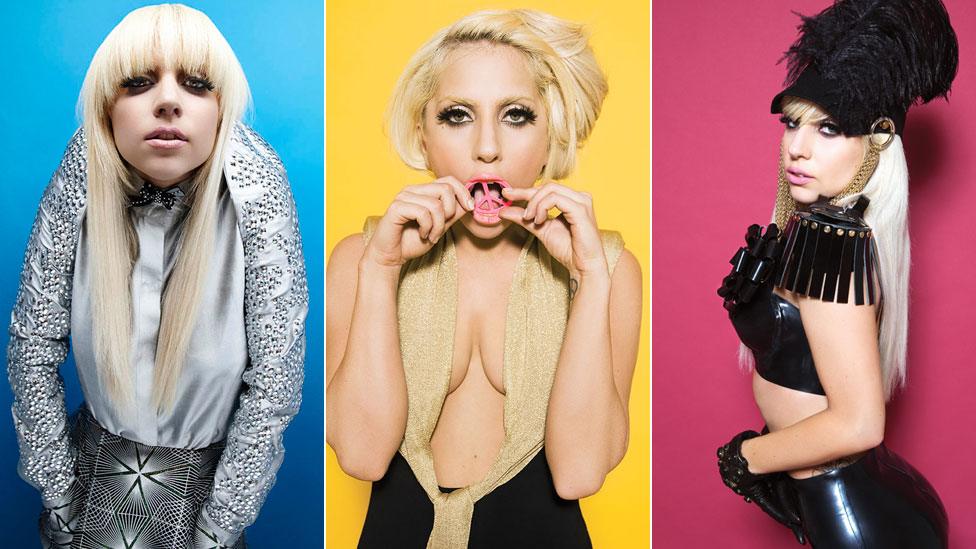
Several of Santini's images of Lady Gaga feature in the exhibition

Nearly 10 years on, they are being used as part of a new exhibition about body dysmorphia, external - a mental health condition where a person spends a lot of time worrying about flaws in their appearance.
Gaga is certainly an icon of fashion and glamour - but she has spoken openly, external about her struggles with bulimia and anorexia in the past.
"I wasn't aware of her issues back then," says Santini, "or maybe body dysmorphia as a term wasn't around so much then.
"She's had her issues with it, and I think it's kind of like the general thing about identity, we are all self-conscious, we are all documenting ourselves all the time.
"And so this incredible introspection of ourselves is going on, so in a way it's morphing in the mind - what you think you look like, how you think you appear, that's the crux of body dysmorphia."
Santini's images of Gaga, some of which haven't been seen before, form part of Identity - a new exhibition at London's Zebra One Gallery.
Works from 10 artists have been selected for the show, all of them exploring themes relating to body dysmorphic disorder (BDD).
The gallery's owner, Gabrielle Du Plooy, came up with the idea for the exhibition earlier this year, and began approaching artists whose work she felt fitted with the theme of the show.
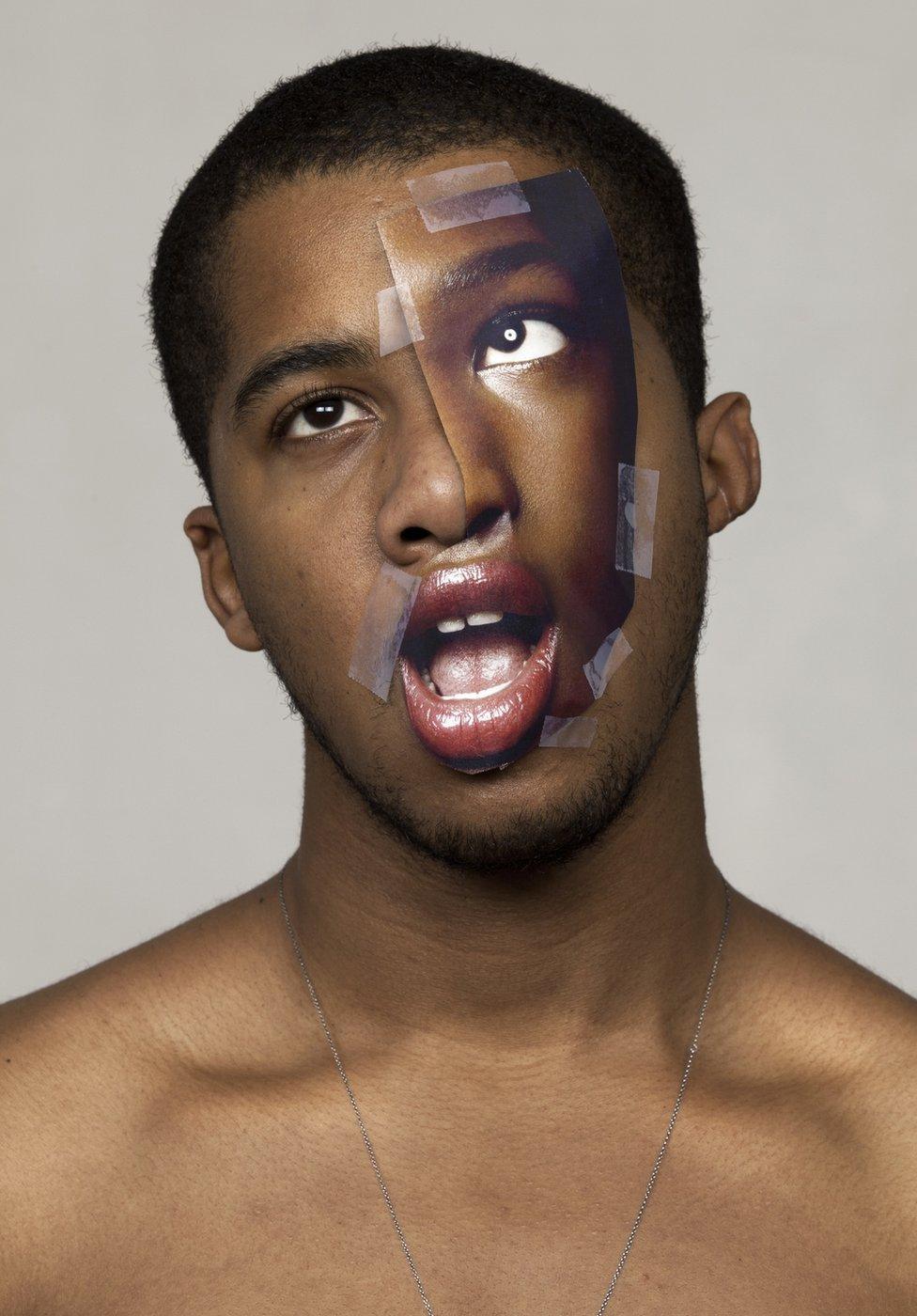
Bruno Metra and Laurence Jeanson (collectively known as Metra-Jeanson) cut out heavily stylised facial features from adverts and taped them over models' faces

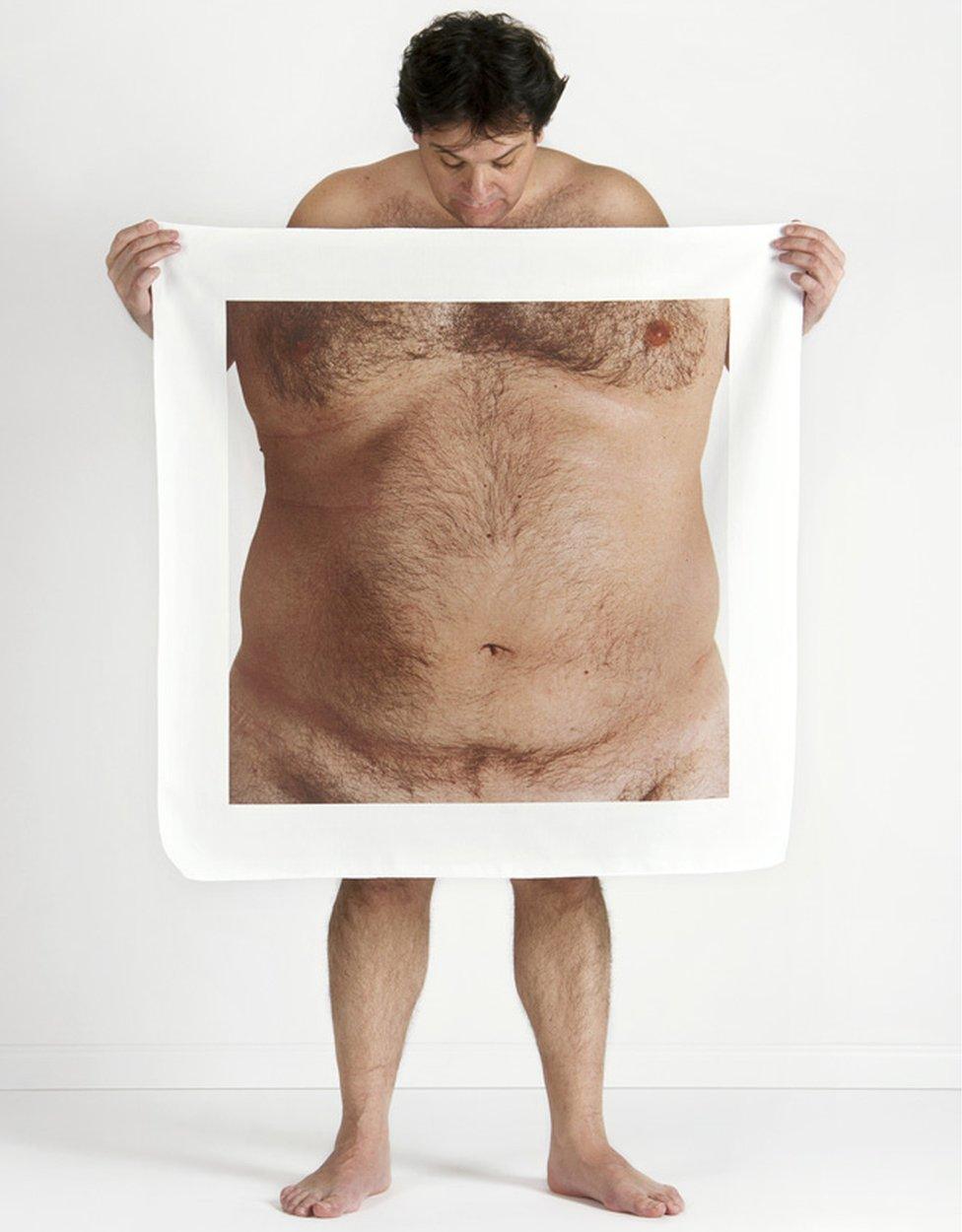
Meltem Isik's portraits see subjects hold up canvases depicting their own perceptions of themselves

All of the works from the 10 selected artists tackle the theme of having a distorted perception of your own appearance.
"My own personal definition of body dysmorphia is not being able to correctly identify yourself," says Scarlet Isherwood - one of the other artists who has contributed.
"Having a really kind of warped perception on the reality of how you look or how you are in real life. And that connects a lot to depression and anxiety."

Body dysmphorphic disorder: Potential signs
Worrying about a specific area of your body - particularly your face
Spending a lot of time comparing your looks with other people's
Looking at yourself in mirrors a lot or avoiding mirrors altogether
Going to a lot of effort to conceal flaws - eg. by spending a long time combing your hair, applying make-up or choosing clothes
Picking at your skin to make it "smooth"

"Celebrities, especially on social platforms such as Instagram, are very glamorised, and also very warped and photoshopped, and I think people got used to seeing this unattainable figure, through these ideals that aren't really accessible to normal people."
Isherwood's hope is that the exhibition "allows people to step back and look at these things that aren't healthy, and be able to kind of see that there's nothing wrong with them".
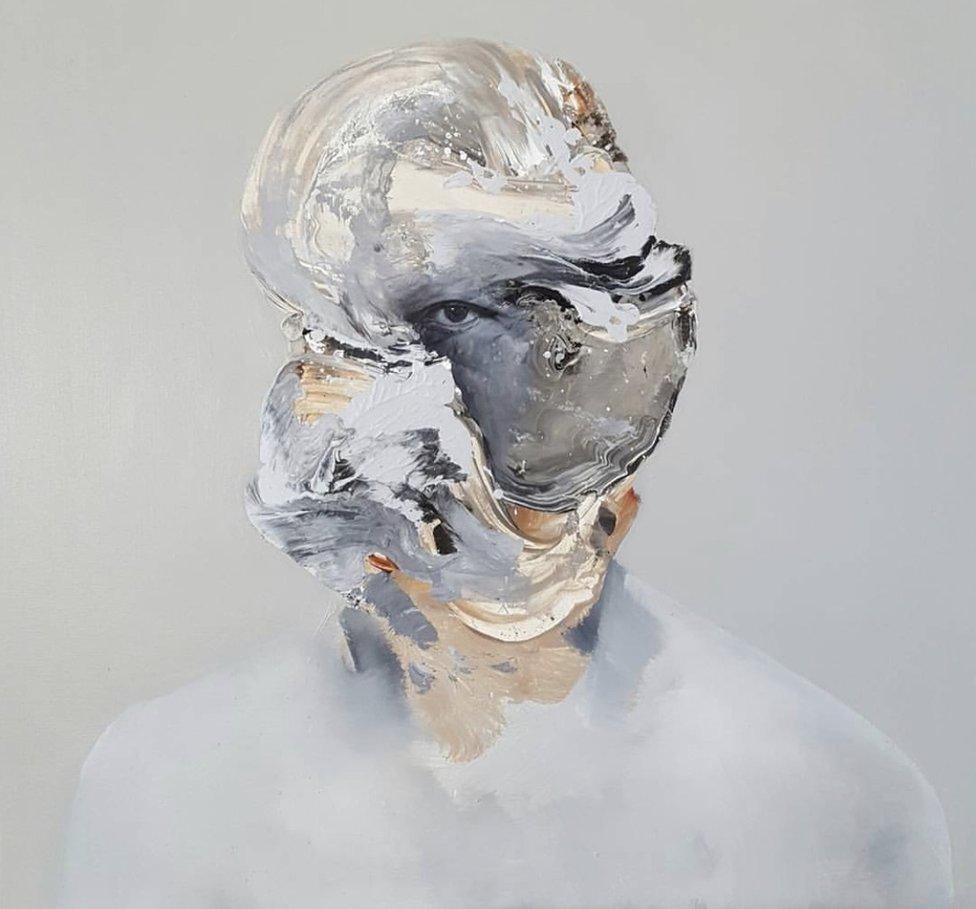
Daniel Martin paints portraits such as Lucas which are intended to challenge definitions of ugliness

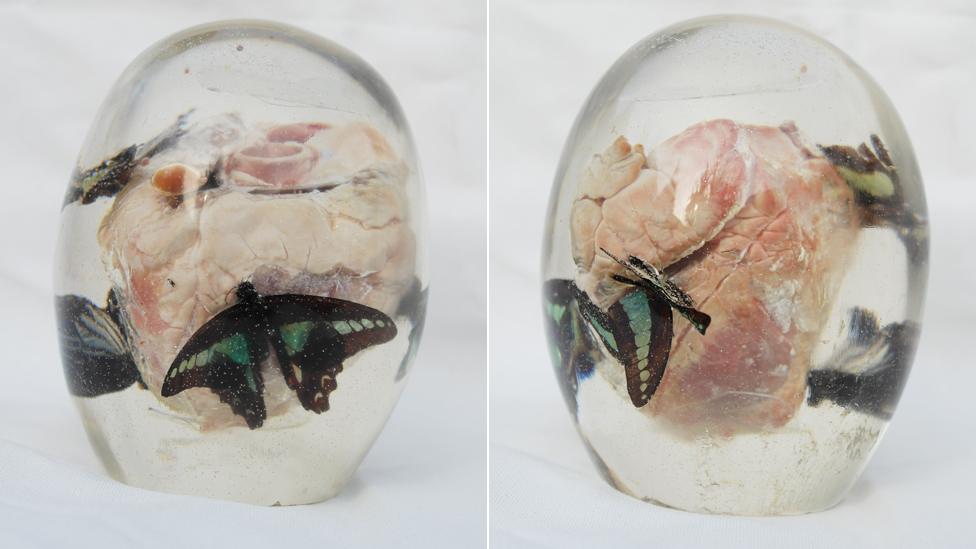
Scarlet Isherwood used resin to encase a real lamb's heart surrounded by butterflies and glitter

Isherwood's own specially-commissioned artworks see lamb's hearts decorated with glitter and butterflies.
She explains: "I wanted the heart to represent people's actual feelings and their value and their self esteem.
"And I wanted these butterflies to represent the media and self-image, taking control and eating everything, much like butterflies do in the wild.
"They feast on rotting meat if they can get to it. And I think as the condition grows, you do start to rot on the inside and you do start to feel worthless and horrible."
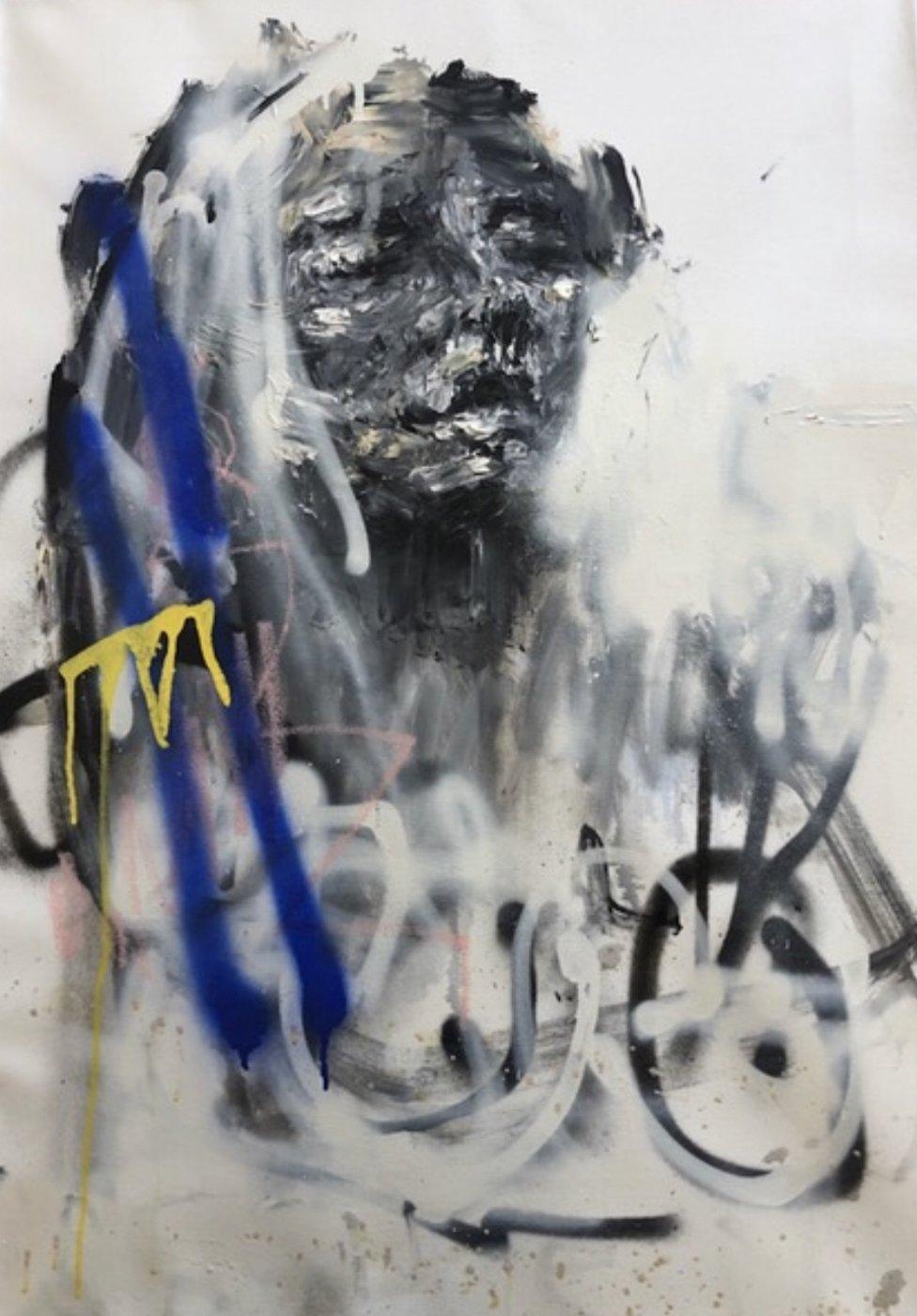
James Green used the facial expressions of his subjects to convey the overwhelming feeling of being trapped

Speaking about body dysmorphia more widely, Isherwood says: "I think everybody to a degree suffers with this, especially in this day and age where we're all constantly comparing ourselves with other people.
"It's a difficult topic to bring up, but I do think that everyone has this feeling inside of them. I've met a few people with different dysmorphias. And I hope with this kind of show it brings awareness for that."
Identity opens at the Zebra One Gallery on 24 November.
- Published7 March 2018
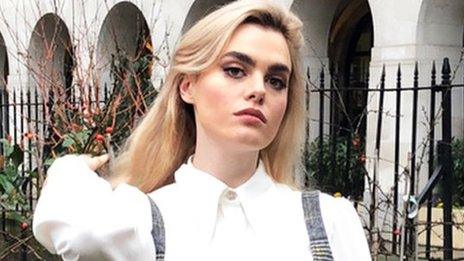
- Published21 June 2015
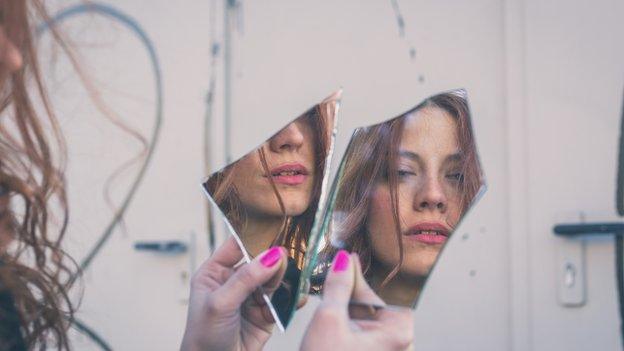
- Published31 October 2017

- Published13 June 2017
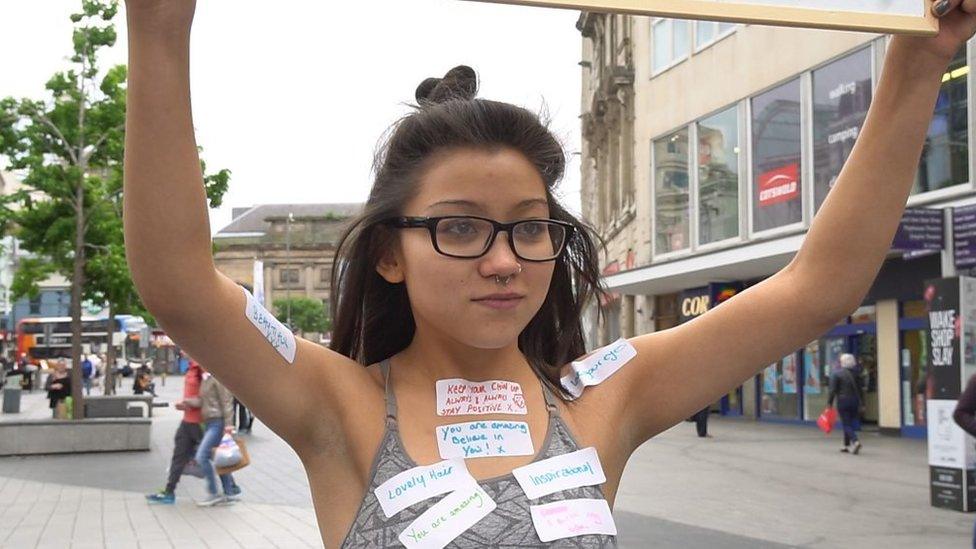
- Published27 March 2018
